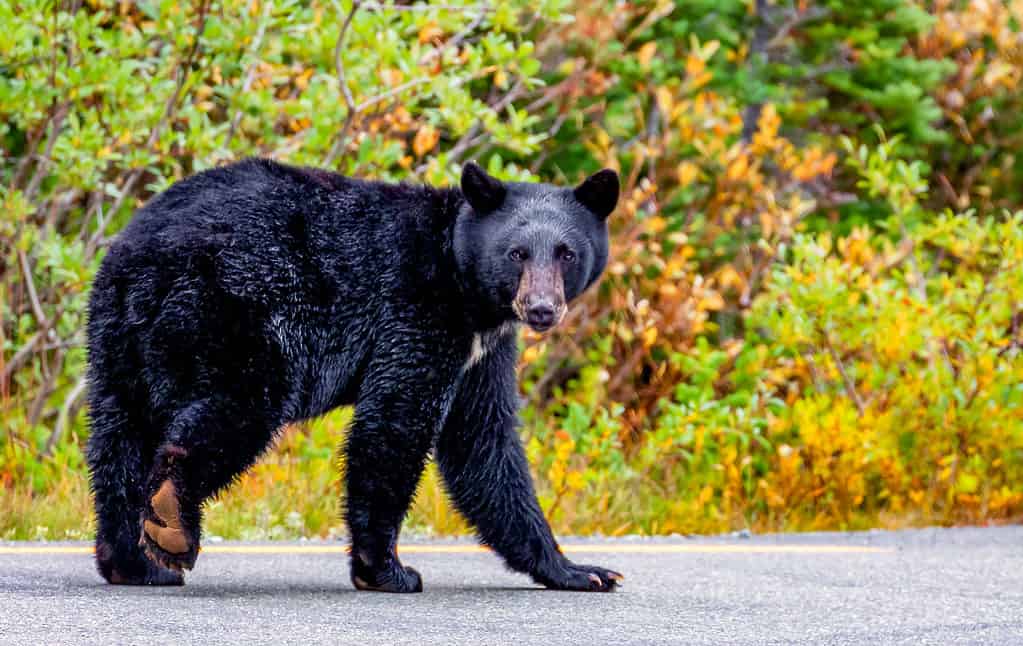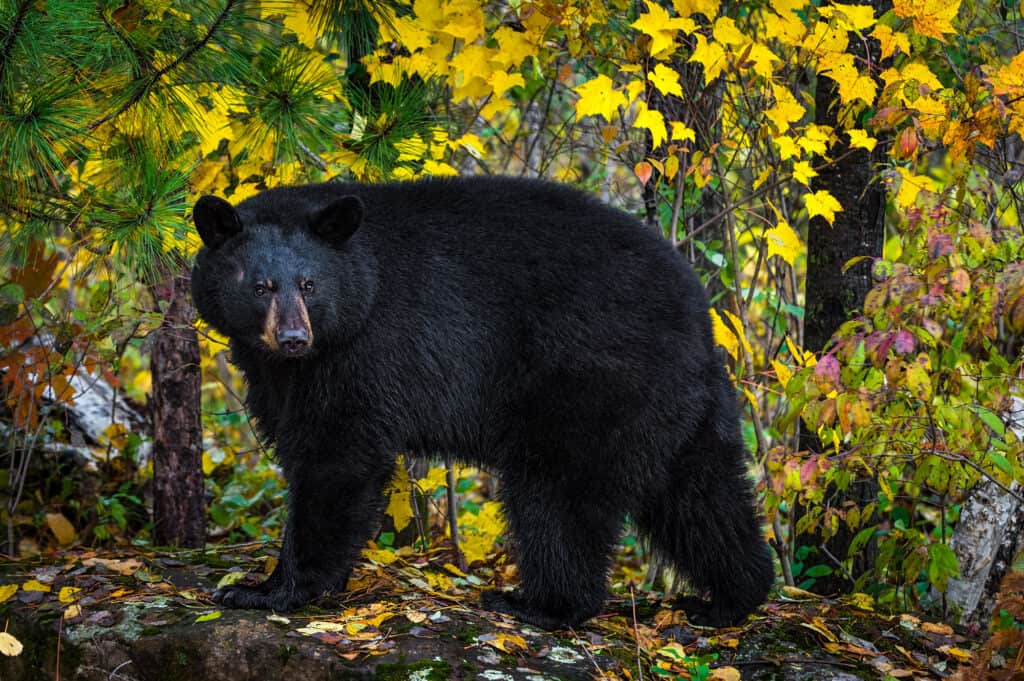There are three different types of bears in North America, or different species if you will. Among them, the American black bear is the most common. It is known that historically, black bears roamed throughout a limited region of Alabama. Therefore, over the years, there have been a few pretty interesting bears that have been caught. In fact, one of the largest bears ever caught in Alabama was done so pretty recently.
Are you curious about one of the biggest bears captured in the heart of the Dixie? Let’s explore all about black bears and learn some more fascinating facts!
The Largest Bear Ever Caught in Alabama

A 315-pound black bear was one of the largest captured black bears that we know of.
©iStock.com/Mark Lee
Currently, there is no record of the largest bear to have ever been caught in Alabama. However, in light of the fact that the record for the largest bear is under dispute, let’s examine a few contenders. Back in June of 2016, there was a very large bear found wandering around downtown Opelika. Auburn University’s conservation department and Auburn University worked together to capture the male bear. The bear was then released back into the wild in Macon County after being fitted with a radio-tracking collar. Finally, in the fall of 2016, there was a report that the 315-pound black bear had been killed by a hunter in the Talledega National Forest in Clay County.
Later in 2018, graduate students from Auburn University were interviewed by The Cullman Tribune about black bear populations in southwest Alabama. Chris Seals, a graduate student at the university, said one of the biggest bears the university has captured weighed 308 pounds. Chris stated that he had seen one that he estimated to be 400 pounds in weight. However, the average weight of most of the bears they catch is about 150 pounds.
Black Bear Types and Appearance
The majority of Alabama’s black bear population historically lived in Mobile, Washington, and Clarke counties in the southwest. These bears are the Florida subspecies, Ursus americanus floridanus, and while they’re rare here, they’re quite plentiful elsewhere in Florida. However, the black bear population in northeast Alabama has steadily increased over the past few years, mainly in DeKalb, Cherokee, and Etowah counties.
This subspecies of black bear looks very similar to the Florida bear but is classified as a different species: Ursus americanus americanus. Additionally, sporadic bear sightings throughout the state have been documented, suggesting that Alabama’s black bear population is increasing slowly. A typical black bear in Alabama has brown-flecked dark fur, elongated nonretractable claws, and distinct white markings on the chest. It has been reported that they can weigh up to 440 pounds. In general, males weigh around 300-350 pounds and have a maximum length of six feet. A female averages 120-160 pounds in weight with a height of nearly five feet.
Black Bear Habitat

Historically, black bears have been found throughout Southwest Alabama.
©iStock.com/christiannafzger
As we mentioned above, black bears are not typically found all throughout the state of Alabama. For the most part, these bears typically roam throughout the southwestern portions of the state.
Alabama’s black bear population is primarily restricted to Baldwin, Mobile, and Washington counties. The presence of bears in several northeast counties has been confirmed, however, they are suspected of being transient bears from other southeastern states.
The black bear thrives in forested areas with a mixture of hardwoods and pines. As a result of the dense undergrowth and thickets provided by these trees, both food and cover for the animals can be found in them. Moreover, they feed on a wide range of foods in small open meadows surrounded by forests. It is also possible for these bears to find additional sources of food and water in the scattered wetlands, streams, and ponds located throughout the region. There are large areas of land required by black bears that have not been disturbed by man. The average male bear roams over 15,000 acres, while the average female bear roams less than 2,600 acres.
How Many Black Bears Are There in Alabama?
In a recent Auburn University study, two subgroups of bears were identified in Alabama. In northeast Alabama, a smaller group of around 30 animals lives in Little River Canyon. This area is near Fort Payne. An estimated 85 bears live in southwest Alabama. Most of them are located in Mobile and Washington counties. However, it is possible that there are 165 bears in the southwest group. In the past four years, the number of black bears in north Alabama has more than doubled, according to Todd Steury, associate professor of wildlife ecology at Auburn University. According to our previous explanation, the northern group of bears migrated into Alabama from North Georgia over time.
Are Black Bears Dangerous?

Although they don’t usually attack unprovoked, it is important to keep your distance from a black bear.
©Holly Kuchera/Shutterstock.com
Like all wild animals, black bears can react in an unpredictable way. However, black bears are typically not aggressive. The species rarely attack humans without provocation throughout its range. A large majority of attacks have been caused by humans who surprise, corner, or otherwise threaten the animals. Maintaining a safe distance from a black bear is the best course of action to avoid a confrontation. If you are hiking in wilderness areas, make noise so that unseen bears cannot surprise you. You should secure garbage cans around your home and place food well out of reach. It is believed that black bears can smell food over a mile away and they prefer human food because it is more calorie-dense. After removing food sources from an area, a habituated black bear may take a few days or even weeks to stop visiting.
Up Next
- Discover the Largest Bear Ever Caught in Idaho
- The Largest Black Bear in History
- Discover the 10 Largest Bears in the World
The photo featured at the top of this post is © Wild Art/Shutterstock.com
Thank you for reading! Have some feedback for us? Contact the AZ Animals editorial team.






